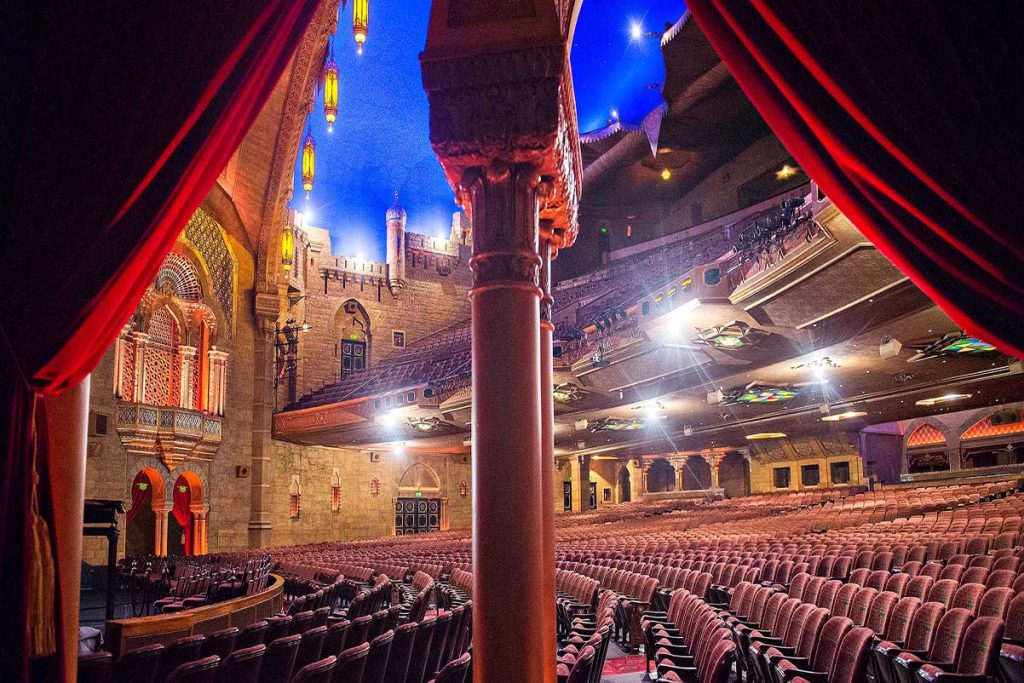As a seasoned traveler and someone who thrives on exploring the rich tapestry of cities around the world, my recent journey to Atlanta was nothing short of extraordinary. Often referred to as the “City in a Forest,” Atlanta is a vibrant blend of Southern charm, rich history, and contemporary culture. Whether you’re a history buff, an art enthusiast, or simply someone looking to experience a city that thrives on diversity and innovation, Atlanta has something to offer everyone. Here’s a detailed account of my visit to some of the must-see attractions in this dynamic city.
Exploring Atlanta’s Historical Landmarks
Atlanta’s history is deep and multifaceted, playing a significant role in the Civil War and the Civil Rights Movement. My first stop was a visit to some of the city’s most significant historical landmarks, which provided a powerful insight into the past.
1. Martin Luther King Jr. National Historical Park
Visiting the Martin Luther King Jr. National Historical Park was an incredibly moving experience. The park encompasses several sites related to the life and legacy of Dr. Martin Luther King Jr., one of the most iconic figures in American history. Walking through the birth home of Dr. King, I could almost feel the weight of the history that was made within those walls. The house, restored to its early 20th-century appearance, offers a glimpse into his early life and the environment that shaped him into the leader he became.
A short walk away is the Ebenezer Baptist Church, where Dr. King and his father preached. Sitting in the pews, I was struck by the realization that this very place was where some of the most significant speeches and sermons in American history were delivered. The church, with its beautiful architecture and historical significance, left me feeling both humbled and inspired.
The Visitor Center nearby houses a museum that chronicles Dr. King’s journey and the broader Civil Rights Movement. The exhibits are poignant and powerful, making it a must-visit for anyone interested in understanding the profound impact of this era on American society.
2. The Atlanta History Center
Next on my list was the Atlanta History Center, a sprawling complex that beautifully intertwines Atlanta’s past with the present. Set on 33 acres of lush gardens and woodlands, the Center offers an immersive experience into the city’s history.
One of the highlights was the Cyclorama: The Battle of Atlanta, a massive 360-degree painting that dramatically depicts the Battle of Atlanta during the Civil War. Standing in the center of the Cyclorama, I was surrounded by a vivid portrayal of one of the most critical moments in American history. The attention to detail in the painting and the accompanying narrative were both educational and awe-inspiring.
The museum also houses exhibitions on Southern folk art, Atlanta’s role in the Civil War, and the city’s transformation through the ages. After exploring the exhibits, I wandered through the Swan House, a stunning 1928 mansion that provides a glimpse into the life of Atlanta’s elite during the early 20th century. The combination of historical artifacts, interactive exhibits, and beautiful grounds made the Atlanta History Center a highlight of my trip.
Delving into Atlanta’s Modern and Contemporary Art Scene
Atlanta is not just a city of historical significance; it’s also a hub for modern and contemporary art. My exploration of the city’s art scene took me to some of the most vibrant and innovative spaces in the Southeast.
3. The High Museum of Art

No visit to Atlanta would be complete without spending time at the High Museum of Art. Located in the artsy Midtown district, the High Museum is the leading art museum in the Southeast and boasts an impressive collection of works spanning centuries and continents.
The museum’s architecture, designed by Richard Meier and later expanded by Renzo Piano, is a work of art in itself. The white, light-filled building is a perfect canvas for the extensive collection it houses. I spent hours wandering through the galleries, marveling at everything from classic European paintings to contemporary works by emerging artists.
One of the most captivating sections was the museum’s collection of American art, which includes pieces from the colonial period through the 20th century. The works by Southern artists were particularly engaging, offering insights into the region’s cultural and historical identity. The High Museum also hosts rotating exhibitions, so there’s always something new to see. During my visit, there was a special exhibition on modern African art, which was both thought-provoking and visually stunning.
4. The BeltLine and its Public Art
The Atlanta BeltLine is an innovative urban redevelopment project that has transformed former railway corridors into a vibrant space for walking, biking, and public art. As someone who enjoys exploring cities on foot, I was thrilled to experience this unique aspect of Atlanta.
The Eastside Trail of the BeltLine is particularly popular and is lined with murals, sculptures, and installations that reflect the city’s diverse and creative spirit. Each piece of art along the trail tells a different story, and I found myself stopping frequently to take in the vibrant colors and thoughtful messages.
What makes the BeltLine even more special is the way it connects different neighborhoods, allowing you to experience the city’s rich cultural diversity. I started my walk near the bustling Ponce City Market, an old Sears, Roebuck & Co. building that has been transformed into a mixed-use space with trendy shops, restaurants, and offices. After grabbing a bite to eat from one of the food stalls, I continued along the trail, enjoying the art and the energy of the people around me.
5. Atlanta Contemporary
For those interested in cutting-edge contemporary art, Atlanta Contemporary is a must-visit. This non-profit, artist-centered institution is dedicated to the creation, presentation, and advancement of contemporary art.
The gallery spaces are ever-changing, featuring rotating exhibitions that challenge traditional notions of art. During my visit, I was particularly struck by an exhibit that explored themes of identity and social justice through multimedia installations. The artists’ bold and innovative approaches to these topics made for a thought-provoking experience.
What I appreciated most about Atlanta Contemporary was its commitment to supporting local artists. Many of the works on display were by artists based in Atlanta or the Southeast, giving visitors a sense of the region’s vibrant and dynamic art scene.
Immersing in Atlanta’s Cultural and Culinary Diversity
Atlanta’s cultural scene extends far beyond its art galleries and museums. The city is a melting pot of cultures, and this diversity is reflected in its food, music, and neighborhoods.
6. Little Five Points
One of the most eclectic and colorful neighborhoods in Atlanta is Little Five Points. Known for its bohemian vibe, this area is a haven for independent shops, quirky boutiques, and vintage stores. As I wandered through the streets, I was drawn to the vibrant street art that adorns many of the buildings.
Little Five Points is also a great place to experience Atlanta’s live music scene. The neighborhood is home to several venues that host everything from indie bands to jazz performances. I spent an evening at Variety Playhouse, a legendary music venue, where I enjoyed a fantastic live performance in an intimate setting.
7. Ponce City Market
Ponce City Market is a must-visit for anyone who loves food, shopping, and history. This massive complex, housed in a former Sears, Roebuck & Co. building, is a testament to Atlanta’s ability to blend the old with the new.
The market’s food hall is a culinary paradise, offering a wide range of options that reflect the city’s diverse population. From Southern comfort food to international cuisine, there’s something to satisfy every palate. I indulged in a delicious meal at Bellina Alimentari, an Italian eatery that prides itself on using fresh, locally-sourced ingredients. The handmade pasta was a highlight, and the cozy atmosphere made it a perfect spot for a leisurely lunch.
After eating, I explored the various shops, which range from high-end boutiques to artisanal craft stores. The market’s rooftop, Skyline Park, offers stunning views of the city and features mini-golf, carnival games, and a beer garden. It’s a fun and lively spot that’s great for both families and groups of friends.
8. The Fox Theatre

For a taste of Atlanta’s performing arts scene, I spent an evening at the Fox Theatre, one of the city’s most iconic venues. Built in the 1920s, the Fox Theatre is a stunning example of Moorish architecture, with its elaborate domes, minarets, and opulent interior.
The theater hosts a wide range of performances, from Broadway shows to concerts and film screenings. I was fortunate enough to catch a performance of a classic musical, and the combination of the theater’s grandeur and the high-quality production made for a truly memorable night.
The Fox Theatre is not just a place to see a show; it’s an experience in itself. The historic atmosphere, combined with the exceptional acoustics and stage design, makes it one of the best venues in the country.
Atlanta is a city that effortlessly blends its rich history with a vibrant contemporary culture. Whether you’re walking through its historic neighborhoods, exploring world-class museums, or enjoying its diverse culinary offerings, there’s always something new and exciting to discover.
My visit to Atlanta left me with a deep appreciation for the city’s ability to honor its past while continually evolving and embracing the future. If you’re planning a trip to Atlanta, be prepared to be captivated by a city that is as complex as it is welcoming. From its historical landmarks to its thriving art scene, Atlanta is a destination that truly has something for everyone.

